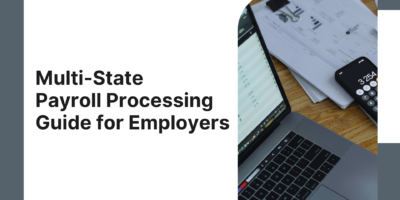
Multi-State Payroll Processing Guide for Employers
Hiring across state lines? This multi-state payroll processing guide breaks down everything you need to know to stay compliant.

The views and opinions expressed in this guest post do not necessarily reflect the views or positions of Shortlister.
Many organizations struggle to create effective compensation philosophies. Data from Salary.com’s 2018 Pay Practices and Compensation Strategy Survey indicates that over 30% of organizations reported the absence of a defined philosophy.
A pay philosophy outlines how an organization values its workforce and structures its pay. Without this guiding principle, maintaining consistent and equitable pay practices becomes challenging.
While it may be tempting to immediately focus on designing a pay structure or benefit, creating a clear compensation philosophy can make a big difference among employees and organizational practices.
But what exactly is a compensation philosophy? Let’s take a closer look.
A compensation philosophy is an organization’s guiding principle for how it pays and rewards its employees. It aims to attract, retain, and motivate employees. It’s the “compass” that drives decision-making about compensation across the organization and should be a “core aspect” of the organization.
As Candice Wolken of Salary.com points out, each compensation philosophy “should reflect the organization’s culture, goals, and mission,” which may vary based on these factors.
When an organization establishes a clear and well-documented compensation philosophy, it realizes several key benefits, including:
For organizations looking to develop or refine their compensation philosophy, some expert consultants can provide comprehensive guidance throughout the entire process.
The distinction between a pay philosophy and a compensation strategy is that the first represents the core principle guiding how a company values and rewards its employees. Moreover, the latter outlines the specific actions and plans to implement that philosophy.
For example, a company may embrace a “philosophy” of pay equity, believing that all employees should be compensated fairly. To execute this principle, the company might develop a “strategy” that includes performance-based raises for all employees.
In short, the compensation strategy is a direct extension of the pay philosophy, turning its principles into actionable steps.
It’s impossible to create an effective pay philosophy without understanding the building blocks that compose it. Here are the elements of a pay philosophy that organizations need to consider.
Alignment with business goals
This element ensures that the compensation strategy is aligned with the company’s overarching business objectives. For example, if innovation is a key priority, the company may offer bonuses to employees who contribute to new product development. Aligning compensation with business goals can promote improved performance and support long-term success.
Compensation experts can help create, refine, and manage salary structures, ensuring alignment with the organization’s compensation philosophy and strategic business objectives.
Internal equity
Internal equity ensures fair compensation based on employees’ roles and contributions. This promotes fairness by ensuring employees with similar responsibilities are compensated consistently.
Kent Plunkett, CEO of Salary.com, recommends conducting a thorough review or cohort analysis when pay equity concerns arise to assess whether any gaps are justifiable by legitimate business reasons or indicative of bias. He added that verifying the data and reassessing job groupings is essential if the results appear unusual.
Market positioning
Market positioning involves setting the company’s pay levels relative to external market benchmarks. Organizations need to offer competitive compensation packages to attract and retain top talent in their industry.
Being at the market median or using a leading or lagging strategy depends on the company’s goals—whether it wants to be competitive in attracting talent (leading) or focus on cost control (lagging).
Unique value as an employer
This concept refers to how an organization differentiates itself from competitors through its compensation strategy, including aspects of the work environment, culture, and rewards.
According to Principal Compensation Consultant Rebecca Gorman at Salary.com, companies should integrate both “extrinsic and intrinsic rewards” to create a comprehensive approach.
For example, a company may provide competitive pay and benefits like health insurance (extrinsic rewards) along with opportunities for growth and recognition (intrinsic rewards) to attract and retain employees.
Building an effective compensation philosophy can be challenging, especially when balancing fair, equal pay within the company and staying competitive in the market.
Fortunately, experienced compensation experts can help maintain competitiveness in the job market. These experts can address the entire pay process, assist with accurate job pricing, and analyze existing pay practices.
To start, assess the organization’s goals and culture. Engage key stakeholders, such as executives, HR, and department heads, to understand the company’s core values, mission, and business objectives.
Consider key questions like:
What outcomes should the pay strategy achieve?
Is the focus on driving performance, attracting talent, or ensuring equity?
Answering these questions will help align the compensation approach with the company’s overall direction.
Evaluate the external market to determine where the organization fits regarding employee compensation. Define the market and decide how to position pay—at, above, or below the market median.
This decision impacts the ability to attract and retain talent. Paying above market may require higher salaries while paying at or below market can help manage costs but may limit competitiveness.
Once the company’s goals and competitive landscape are assessed, structure the compensation system to reward behaviors that align with these objectives. Design the total rewards offering to motivate employees to perform, collaborate, and innovate. This can include base salary, bonuses, merit-based pay, and other incentives tied to business goals.
Effective communication is critical to a comprehensive compensation philosophy. A Salary.com survey found that 35% of respondents said their philosophy was not communicated.
To address this, organizations should define the priorities and strategies behind pay decisions. Employees must understand how pay is determined and how their performance affects rewards. Managers should also be trained to explain the philosophy and encourage employee questions and feedback.
Review and update the compensation philosophy regularly to keep it relevant. Changes in the business environment, market conditions, and workforce needs may require adjustments to the strategy.
For example, shifts in the job market or company direction might affect the compensation structure. Staying proactive and aligning the philosophy with evolving goals ensures its effectiveness in attracting and retaining talent.
Here are the best practices for developing a pay philosophy, along with examples to illustrate these strategies:
As mentioned, ensure that pay practices align with the company’s goals and beliefs. When compensation reflects what the company stands for, employees will likely feel more connected and valued.
For example, if innovation is a core value of the company, bonuses could be offered to employees who contribute new ideas or lead significant projects. Various examples of compensation philosophy can be considered to create an approach that aligns with company values.
Be transparent about how compensation decisions are made. When employees understand the pay process, it builds trust and reduces confusion. Regular meetings or a dedicated webpage can explain how employee salaries, bonuses, and raises are determined.
Check pay practices regularly to ensure fairness. Annual salary reviews can help identify any pay discrepancies. If similar positions have different pay without a valid reason, adjustments should be made, or recommendations for corrective action should be sought from experts.
Compare pay to what other companies in the industry offer. This helps ensure the attraction and retention of top talent. A competitive pay assessment can be conducted to identify any pay gaps and recommend necessary changes.
Ensure the pay philosophy is applied consistently to all employees. Consistency helps build trust in the system.
Remember, the company’s compensation philosophy is the foundation of how employee pay and benefits are managed. It should reflect the company’s values and goals, guiding decisions on hiring, employee retention, and motivation. Also, it should be adjusted as needed to remain competitive and relevant.
Browse our curated list of vendors to find the best solution for your needs.
Subscribe to our newsletter for the latest trends, expert tips, and workplace insights!

Hiring across state lines? This multi-state payroll processing guide breaks down everything you need to know to stay compliant.

Accounts payable remains heavily manual, consuming time and resources. Could automation or outsourcing to AP specialists be the better way forward?

How can earned wage access reshape the financial reality for employees living paycheck to paycheck? As economic uncertainties persist, this innovative approach to payroll may hold the key to reducing financial stress and boosting workplace productivity.

Understanding the benefits of personal insurance is a good step in the right direction when protecting people and their families from losses they couldn’t afford to cover on their own.
Used by most of the top employee benefits consultants in the US, Shortlister is where you can find, research and select HR and benefits vendors for your clients.
Shortlister helps you reach your ideal prospects. Claim your free account to control your message and receive employer, consultant and health plan leads.